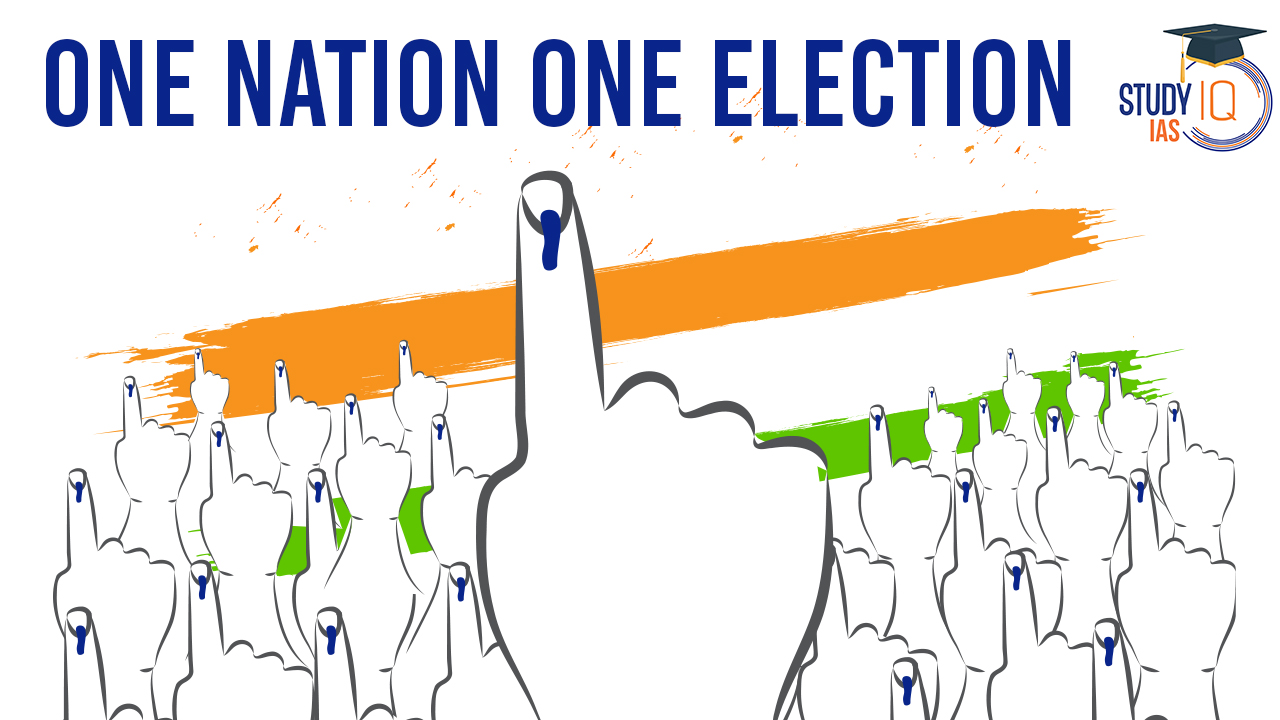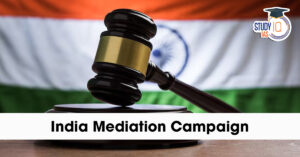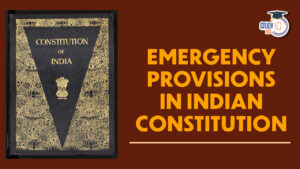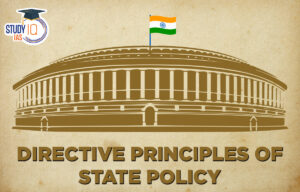Table of Contents
The concept of One Nation, One Election has been a long-standing proposal, championed by the Bharatiya Janata Party (BJP) as a means to streamline the electoral process in India. On December 17, 2024, the government took a significant step towards implementing this vision by introducing two Bills in the Lok Sabha. These Bills aim to synchronize elections to the Lok Sabha and State Assemblies, addressing the need for electoral efficiency and reducing the financial and administrative burden caused by frequent elections. In this article, we delve into the key provisions of the proposed amendments, the implications for India’s federal structure, and the challenges ahead.
One Nation, One Election Bills Introduced
The One Nation, One Election Bills were introduced in the Lok Sabha on December 17, 2024, aiming to synchronize Lok Sabha and State Assembly elections. Key constitutional amendments, including a proposed Article 82A, address simultaneous elections, terms of Houses, and logistical frameworks. The reform intends to improve governance efficiency, reduce election costs, and minimize disruptions caused by frequent polls. However, challenges like federalism concerns, constitutional amendments requiring broad political consensus, and logistical preparedness pose significant hurdles. The Bills mark a transformative step in India’s electoral process but face a long road ahead.
What is the One Nation, One Election Bill?
This Bill eliminates frequent elections by holding a single electoral process for both Lok Sabha and State Assemblies. It seeks to reduce repeated polls’ financial and administrative burden, improve voter turnout, and ensure stable governance.
Key Features of the One Nation, One Election Bill
- New Article 82A: Facilitates simultaneous elections for the Lok Sabha and State Assemblies.
- Amendments to Articles 83, 172, and 327: Aligns the terms of Lok Sabha and State Assemblies, addressing mid-term polls and operational challenges.
- Election Commission’s Role: Mandates the Election Commission to manage synchronized elections.
Current Status of the One Nation, One Election Bill
The One Nation, One Election Bill has been introduced in the Lok Sabha but is not yet passed. It requires a two-thirds majority in both Houses of Parliament and ratification by at least half the states for implementation.
Union Cabinet clears One Nation, One Election bill
The Union Cabinet has officially cleared the “One Nation, One Election” bill, aiming to synchronize elections across the country. The proposal is expected to be presented in Parliament next week. This initiative is poised to streamline electoral processes, reduce costs, and enhance policy consistency, marking a significant potential reform in India’s democratic framework. Would you like more details or analysis on this development?
‘One Nation, One Election’ Proposal Gets Cabinet Nod
The Union Cabinet’s approval of the “One Nation, One Election” (ONOE) proposal marks a significant step toward reforming India’s electoral process. This ambitious plan, aimed at holding simultaneous elections for the Lok Sabha, state assemblies, and local bodies, has the potential to transform the country’s political landscape. However, several hurdles must be overcome before it can be implemented.
Next Steps:
- Constitutional Amendments: Changes to Articles 83 and 172 are required to align election terms.
- Phased Implementation: Lok Sabha and state assembly elections will align first, followed by local body polls within 100 days.
- Consensus-Building: Broad political support, especially from opposition parties, is essential.
- Implementation Group: A dedicated team will focus on logistical and legal challenges.
Key Challenges:
- Political Consensus: Opposition parties argue ONOE may overshadow state issues.
- Differing Election Cycles: Aligning various state assembly terms will require legal maneuvering.
- Logistical Complexity: Organizing simultaneous elections demands significant resources.
- Federalism Concerns: Critics fear centralization of power, diminishing state-level governance.
Ramnath Kovind Panel Report on One Nation, One Election
The High Level Committee on One Nation, One Election, chaired by Ram Nath Kovind, recommends synchronizing Lok Sabha, state Assembly, and local body elections in India. They propose 15 constitutional amendments through two bills.
- The first bill establishes the transition process, empowering Parliament to legislate on simultaneous elections. Amendments address premature dissolution of Houses and include Union Territories.
- The second bill focuses on local body elections, requiring state ratification. It introduces a Single Electoral Roll. Challenges include political coordination and logistical complexities. Successful implementation hinges on bipartisan support and meticulous planning to streamline electoral processes and enhance governance efficiency.
The high-level committee headed by former President Ram Nath Kovind on One Nation, One Election presented the report to the President Droupadi Murmu. The 22nd Law Commission, which is examining the simultaneous polls issue, is also expected to submit its report to the Law Ministry and recommend the same from the 2029 general election cycle.
Simultaneous Election in India
Simultaneous elections, also known as “One Nation-One Election,” refer to the idea of conducting multiple elections at various levels of government, such as national parliamentary elections (e.g., Lok Sabha in India) and state or regional legislative elections, all at the same time or during a synchronized period. This concept aims to align the election schedules for different tiers of government to minimize the frequency of elections and their associated costs, streamline governance, and reduce disruptions caused by election-related activities.
One Nation One Election Debate History
The debate over the “One Nation-One Election” in India has a historical evolution that involves various committees, political personalities, and changing circumstances. Here’s a more detailed overview:
| Timeline | Details |
| 1952-1967 | India’s electoral system initially followed the practice of simultaneous elections. Lok Sabha (the national parliament) and state legislative assembly elections were held together during this period. This simultaneous election system aimed to streamline the electoral process and reduce the frequency of elections. |
| 1967-1971 | The practice of simultaneous elections was disrupted when the Fifth Lok Sabha elections were held earlier than scheduled in 1971 due to political developments. |
| 1999-2000 | The Law Commission of India, under the chairmanship of Justice B.P. Jeevan Reddy, submitted a report suggesting the possibility of simultaneous elections. The report discussed the advantages of synchronized elections, including cost reduction and improved governance. |
| 2014 | The debate gained renewed momentum when Prime Minister Narendra Modi, after coming to power, advocated for the idea of “One Nation-One Election.” He argued that holding elections at various levels of government throughout the year leads to governance disruptions and increased expenses. |
| 2015 | The Parliamentary Standing Committee on Personnel, Public Grievances, Law, and Justice, chaired by Congress MP E.M. Sudarsana Natchiappan, submitted a report titled ‘Feasibility of Holding Simultaneous Elections to House of People (Lok Sabha) and State Legislative Assemblies.’ The report explored the practical aspects and challenges of implementing simultaneous elections. It recommended changes to election laws to facilitate this idea. |
| 2017 | NITI Aayog, India’s policy think tank, released a discussion paper on simultaneous elections. This paper, authored by Bibek Debroy and Kishore Desai, presented a comprehensive argument in favor of simultaneous elections. It emphasized the issues of governance disruption caused by the Model Code of Conduct during election periods and the escalating costs of elections. |
| 2019 | To delve deeper into the concept, a committee led by then-President Ram Nath Kovind was formed to examine the issue and submit a report on simultaneous elections. This committee aimed to gather insights from various stakeholders and assess the practicality of implementing the idea. |
Throughout this evolving debate, political leaders from different parties have expressed both support and opposition to the concept. The discussion revolves around issues such as cost savings, efficient governance, political consensus, and the need for legal and constitutional changes to enable simultaneous elections. The “One Nation-One Election” debate continues to be a significant topic of national importance, as it involves fundamental changes to India’s electoral processes and governance structure.
Advantages of One Nation One Election
Here are the advantages of One Nation-One Election:
| Aspect | Details |
| Cost Savings | Holding all elections together would save a significant amount of money. India spends a substantial sum on conducting elections. India’s 2019 Lok Sabha election was estimated to cost around ₹60,000 crore (approximately $8 billion). |
| Efficient Use of Resources | It reduces the burden on election-related manpower, including security personnel and polling officials, making better use of resources. India deploys over 10 million personnel as polling officials across 9,30,000 polling stations during a general election. |
| Less Disruption | Simultaneous elections help avoid frequent interruptions in governance due to the Model Code of Conduct, allowing governments to focus on implementing policies and reforms. |
| Stable Governance | It promotes stability in governance by reducing the constant cycle of elections, allowing elected representatives to concentrate on their roles without the distraction of election campaigns. |
| Reduced Electoral Pressure | Political parties may focus more on long-term policy implementation rather than short-term electoral gains, resulting in better decision-making. |
| Streamlined Election Process | Conducting elections simultaneously simplifies the complex scheduling of elections at different levels, making it more organized and efficient. |
Disadvantages of One Nation One Election
Here are some points regarding the disadvantages of One Nation-One Election:
| Aspect | Details |
| Lack of Local Focus | Simultaneous elections might lead to a reduced emphasis on local issues. For instance, in a state assembly election, candidates often address local problems like water scarcity, education, and healthcare. In a simultaneous election, these vital concerns might get overshadowed by national or state-level topics. This could make it challenging for voters to make informed choices about their local representatives. |
| Reduced Accountability | Frequent elections help ensure that elected officials stay accountable to the public. In India, elections happen regularly at various levels of government, enabling citizens to hold their representatives answerable for their actions. If elections are less frequent, there may be longer gaps between opportunities for voters to evaluate and replace underperforming leaders. |
| Coordination Challenges | Coordinating elections across the entire country, involving multiple tiers of government, can be a logistical challenge. India is a vast country with diverse regions, and ensuring a smooth, synchronized election process can be complicated. Delays, administrative complexities, and potential errors could arise due to the sheer scale of simultaneous elections. |
| Potential for Dominance | National political parties with larger resources and influence might have an advantage over regional or local parties in simultaneous elections. This could lead to the dominance of larger parties and the weakening of regional representation. Smaller parties that focus on specific regional issues may find it harder to compete effectively. |
| Risk of Hasty Decisions | Longer terms in office, resulting from less frequent elections, might make political leaders less responsive to changing circumstances. They could become less cautious about their decision-making, potentially leading to rushed or poorly thought-out policies. |
| Constitutional Changes | Implementing simultaneous elections would require significant constitutional and legal changes. This could involve amending various provisions of the Indian Constitution and reworking election laws. Such an extensive overhaul could be a complex and time-consuming process, with no guarantee of a smooth transition. |
One Nation One Election UPSC
“One Nation-One Election” is a crucial topic for UPSC aspirants as it aligns with several keywords in the UPSC syllabus, including “Governance,” “Constitutional Framework,” and “Election Systems.” Understanding this concept is essential for candidates seeking to excel in UPSC examinations. Additionally, UPSC online coaching and UPSC mock tests often incorporate contemporary topics like “One Nation-One Election,” ensuring that aspirants are well-prepared to tackle relevant questions in the exam and stay updated with current affairs that may feature in UPSC papers.


 India Mediation Campaign, Objectives, Pr...
India Mediation Campaign, Objectives, Pr...
 Emergency Provisions in Indian Constitut...
Emergency Provisions in Indian Constitut...
 Directive Principles of State Policy (DP...
Directive Principles of State Policy (DP...





















